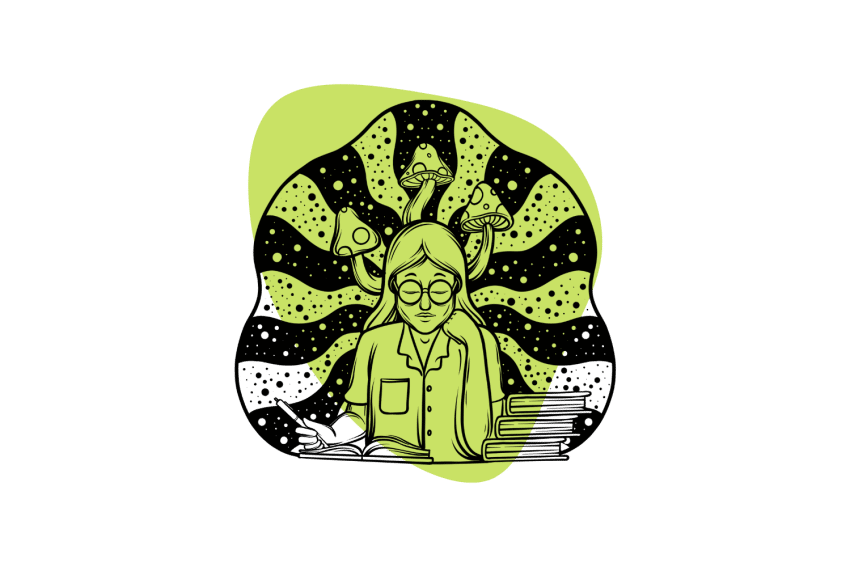
Microdosing isn’t a new concept. We’ve known about the possible benefits for decades. Now there’s more research on the topic than ever, and the results are nothing short of inspiring.
Studies support the idea that microdosing psychedelics such as LSD or psilocybin help improve one’s ability to solve complex problems and think more creatively. Now, researchers are discovering these compounds might be an alternative treatment to common cognitive impairments such as ADHD (attention deficit hyperactivity disorder).
We’ll look at the research surrounding low-dose psychedelic use in people with ADHD and dig deep to uncover whether microdosing can reduce symptoms. We also look at what substances will likely offer the most value and how to get the best results.
- Can You Use Psychedelics to Treat ADHD?
Experts claim that microdosing with psychedelic substances such as LSD (lysergic acid diethylamide) and psilocybin (the active compound found in magic mushrooms) could be useful for treating ADHD.
As a result, many people are turning to psychedelics over more conventional ADHD drugs, such as methylphenidate (Ritalin), lisdexamfetamine (Vyvanse), or amphetamine (Adderall).
So far, the research on psychedelics as a reliable treatment is still in the early stages. It’s too soon to make definitive claims on whether these drugs work for ADHD, and overall results will largely depend on the individual.
Current research supports the idea that tryptamine-based psychedelics, such as psilocybin, LSD, MDMA, and DMT, are useful for treating other conditions associated with neurochemical balance. Many of these conditions share distinct overlaps with the pathophysiology believed to underpin ADHD.
Conditions with strong evidence psychedelics can support:
- Post-traumatic stress disorder (PTSD)
- Treatment-resistant depression
- Addiction and alcoholism
- Existential dread and anxiety
- Cluster headaches
What Does the Research Say?
Research on this topic is still in the early stages. Current evidence definitely looks promising, but it should be taken with “a grain of salt,” at least until hard-standing clinical trials appear.
Plenty of anecdotal evidence shows positive results for people microdosing with psychedelics to treat ADHD.
Here’s what the research says so far.
Study #1 (Survey): Survey On the Effects of Low-Dose Psychedelics
This online survey explored the effectiveness of psychedelics on ADHD and produced promising results [1].
The survey asked 3,590 people who have previously or are currently microdosing psychedelics for self-rated reports on their experiences. Of those questioned, 1,062 claimed to use low-dose psychedelics to treat anxiety, ADHD, and other mental disorders — 79.2% of them were prescribed conventional medications previously.
The survey discovered that 70% of these participants favored microdosing psychedelics over conventional treatments. These participants claimed their symptoms lessened or disappeared entirely after microdosing with psychedelics (psilocybin, LSD, 1P-LSD, or MDMA).
The survey concluded that low-dose psychedelics might help alleviate symptoms of mental conditions, including ADHD.
Study #2 (Meta-Analysis): Psychedelics, Brain Functions, & Behavior
Another paper compared several past studies involving psychedelics and looked at current evidence suggesting these drugs are a potential treatment option for people with ADHD [2], including the first-hand experiences of people that had replaced stimulant medication with psychedelic microdoses.
The paper also outlined a connection between dysfunctional neural mechanisms, the neural effects of psychedelics, and the effects of psychedelics on brain function and behavior.
Chapter one of the paper assessed and outlined the structural and functional brain impairments and the neurotransmitter systems involved with ADHD.
Chapter two examined the structural and functional brain effects, neurotransmitter systems, and neural mechanisms associated with psychedelics.
The researchers then went on to make comparisons with these mechanisms in relation to the impairments and neurotransmitter systems involved with ADHD, creating links to support psychedelics as a potential treatment.
In chapter three, research into psychedelic microdoses, safety concerns, and anecdotal evidence were addressed. These non-scientific articles and case reports described “promising and potentially life-changing benefits of microdosing psychedelics for ADHD.”
The paper concluded that using psychedelic microdoses for treating ADHD is possible, but further study is needed to outline exactly how these substances can help curb symptoms.
Study #3 (Upcoming Clinical Trial): Microdosing for ADHD
There’s quite a lot of research surrounding the use of psychedelics for ADHD but very few clinical trials — the gold standard of the research world.
One upcoming trial by Mind Medicine Inc. plans to do a phase two multi-center, randomized, double-blind, placebo-controlled study to see if MM-120 (an optimized version of LSD) is an effective treatment for ADD and ADHD.
This will be a 1:1 randomization, double-blind, to MM-120 or the placebo. An estimated 52 participants will consume 20 micrograms of the drug/placebo twice weekly for six weeks. The trial is expected to discover whether there’s a baseline change in ADHD symptoms among the MM-120 group.
Study #4 (Clinical Trial): Long-Term Effects of Psilocybin Compared to ADHD Medication
The Washing University School of Medicine will conduct another upcoming trial to look at the immediate and long-term effects of psilocybin on the cortical and cortico-subcortical brain networks.
This phase 1 trial will employ functional brain imaging to discover the effects of psilocybin on the brain — specifically the 5-HT2A receptor, a serotonin receptor that may be related to remission in ADHD [3].
Although this trial isn’t ADHD-specific, psilocybin will be compared against methylphenidate — a stimulant medication used to treat narcolepsy and ADHD.
The study may uncover more information on how psilocybin affects brain function — specifically the 5-HT2A receptor — and human behavior and could lead to more research on how it could benefit mental dysfunctions.
What Psychedelics Work Best for ADHD?
Although clinical trials and scientific studies on psychedelics and mental disorders are becoming more apparent, most research looks into psilocybin and LSD — the two most commonly used psychedelics among those wanting to treat ADHD and other disorders.
Other psychedelics and mild-altering substances may benefit people with this condition, but concrete research is slim to none at the moment. That being said, other substances are gaining interest as potentially effective ADHD treatments, such as tryptamine psychedelics like 4-AcO-DMT, 1P-LSD, LSZ, ETH-LAD, AL-LAD, PRO-LAD, 1V-LSD, or other lysergamides.
Some phenethylamine psychedelics share overlap with this effect as well, including mescaline, 2C-B, 2C-C, 2C-D, and other 2CX substances.
All of these substances act on the same 5HT2C receptors as psilocybin and LSD and impact neural pathways associated with higher executive function and thought.
In this section, we’ll look into psilocybin and LSD primarily as these two substances have the most evidence to support their use in treating ADHD. However, we’ll also touch on a lesser-known psychedelic with promising attributes for treating it.
1. Microdosing Psilocybin for ADHD
There are several first-hand reports from people that have used and are still using psilocybin to treat their ADHD symptoms, but not everyone has the same experience. Some people have excellent results, while others report no change in their symptoms at all.
Psilocybin may not work for everyone, but it’s a good psychedelic to start with if you’re looking to experiment with microdosing. It’s readily available in magic mushrooms — which are easily cultivated at home — and has already been proven safe and is decriminalized in many municipalities around the world.
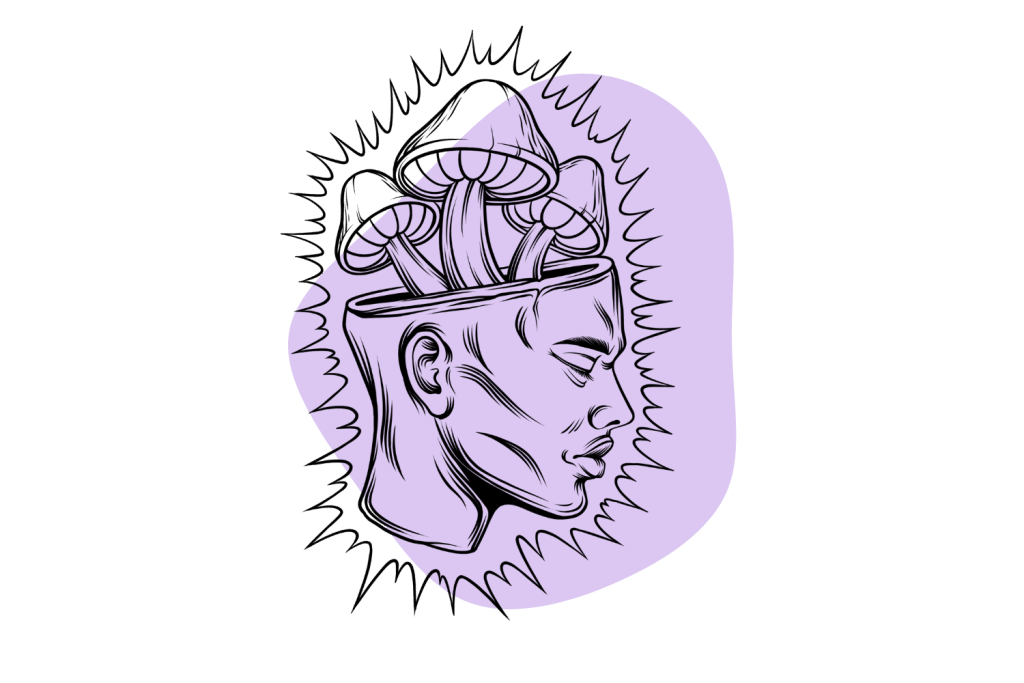
A typical microdose of psilocybin sits somewhere between 100 to 500 milligrams or around 0.1 to 0.5 grams of dried shrooms.
Microdosing with magic mushrooms isn’t an exact science. Figuring out the exact amount of psilocybin per gram of mushroom can be difficult, to say the least. There are over 100 distinct strains of magic mushrooms — each with different psilocybin and psilocin percentages.
There are also many different species of magic mushrooms — some are very low potency (less than 0.1% total tryptamines); others are very strong (over 2% total tryptamines).
It’s more important to gauge the dose based on how you feel. Start low, with either 50 or 100 micrograms, and increase the dose slowly. You should feel some subtle cognitive effects, but there shouldn’t be any visual or auditory distortions.
There are many ways to take magic mushroom microdoses — the most common include brewing them into a tea, filling them into capsules, or sprinkling them into smoothies or other foods (after cooking).
2. Microdosing LSD for ADHD
LSD is one of the most potent psychedelics — many times stronger than psilocybin. However, when used at equivalent doses, the effects are very similar.
The main problem with microdosing LSD is its incredible potency. LSD is consumed in minute amounts — as little as 50 micrograms (0.05 milligrams) can result in mind-bending psychedelic trips lasting hours at a time.
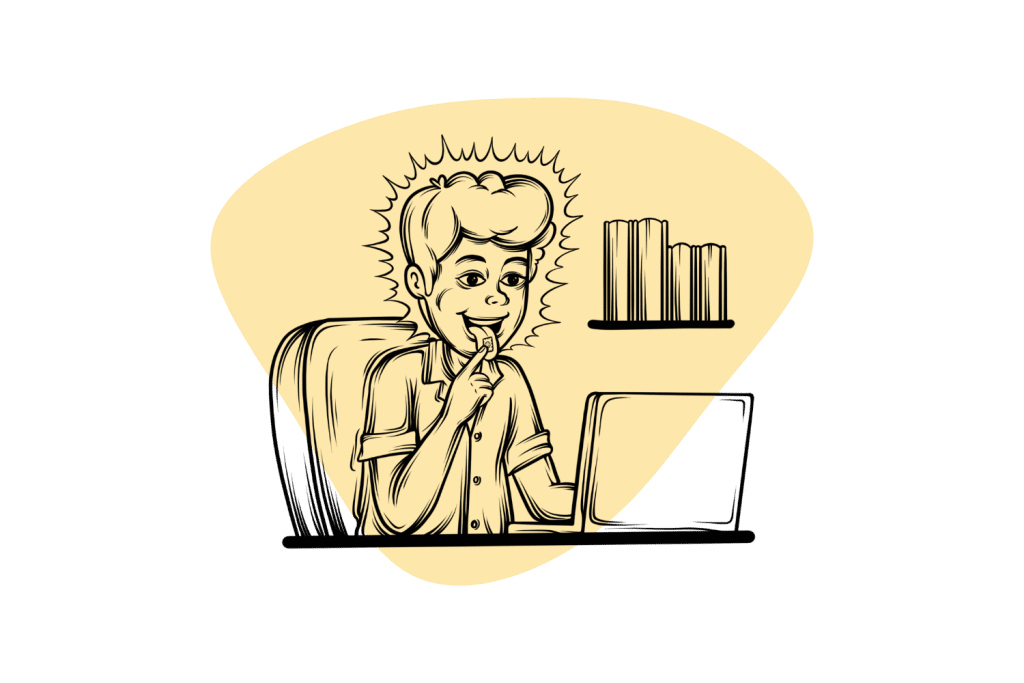
A standard microdose is around 1/10th of the psychoactive dose — putting LSD microdoses somewhere between 5 and 15 micrograms.
Most LSD blotter tabs contain around 80–140 micrograms of LSD — so the easiest way to measure a microdose is to cut the tab into 9 individual pieces (separate into thirds vertically and horizontally).
If you’re lucky enough to have liquid LSD, exact dosages can be measured through dilution — but this process should only be done by those experienced with LSD and who understand the principles of diluting psychedelics safely.
There’s very little room for error with LSD. Although consuming too much is unlikely to harm you, it’s possible that you’ll end up tripping.
Microdosers who use LSD to help with ADHD often note reduced symptoms and increased focus and clarity of mind.
There are a few drawbacks to using LSD in microdoses, as some people claim it makes them feel spaced out and unfocused.
3. Microdosing 4-AcO-DMT for ADHD
4-AcO-DMT was originally created by Albert Hofmann (the man who invented LSD) in 1963. At the time, its psychoactive properties were not explored, but a paper from 1999 proposed its potential use in therapy as a low-cost alternative to psilocybin [5].
This psychedelic is inactive in its natural form but acts as a prodrug for psilocin. It only becomes active after passing through the liver, but the effects are virtually identical to magic mushrooms. 4-AcO-DMT takes longer to kick in and remains active in the body for more time, but its effects and intensity are almost identical to psilocybin.
All of the benefits associated with psilocybin for managing ADHD are implied with 4-AcO-DMT too.
The usual microdose of 4-AcO-DMT is 1 or 2 mg.
4. Microdosing Mescaline for ADHD
Mescaline (3,4,5-trimethoxyphenethlamine) is the hallucinogenic compound that’s present in the peyote and San Pedro cacti. Although less popular now, it was one of the first psychedelics to enter the Western culture. It can induce an intense psychedelic state similar to LSD and psilocybin, but the effects are very different when microdosed.
A low dose (10–30 milligrams) of mescaline is not psychoactive and produces relaxing and focusing effects — something that may be beneficial for people with ADHD.
Related: How to Safely Microdose Mescaline.
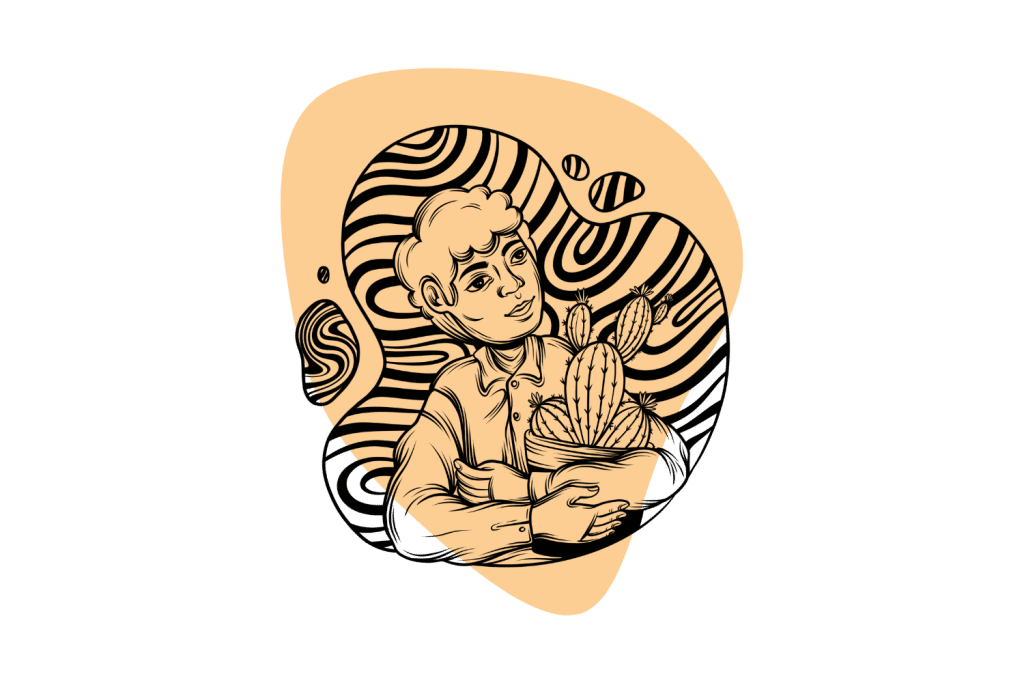
The main benefit to microdosing mescaline over other tryptamine psychedelics, such as psilocybin and LSD, is that it’s less spacey. Some people complain that LSD and psilocybin can sometimes make concentrating even more difficult — especially if they use too much. Mescaline doesn’t seem to have this issue for most people. Users remain grounded and focused throughout the day.
More research is needed to elucidate these claims in more detail.
Related: Should You Be Microdosing MDMA?
How Much is a Microdose?
A microdose is a sub-perceptual dose of a psychoactive substance. In simple terms, when you microdose, you’re essentially consuming too small a dose to “get high” but enough to make subtle changes in the brain.
A typical microdose is 10% of a standard psychoactive dose, regardless of the substance.
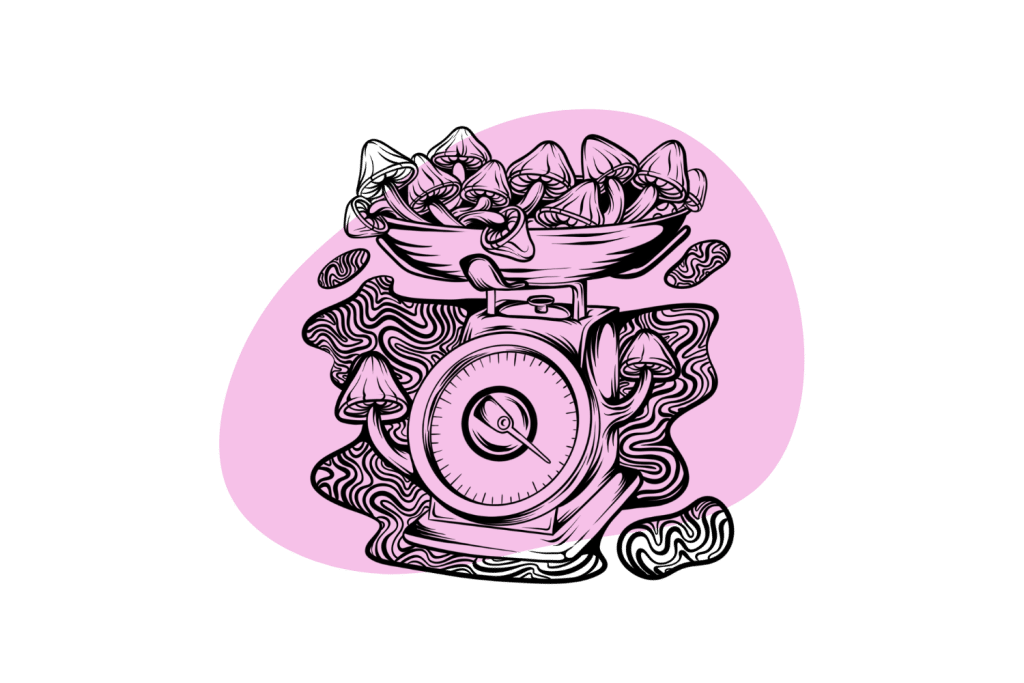
With that said, the ideal microdose for one person will be different for someone else. Everyone experiences these substances differently, so it’s important to proceed with caution and start with a lower dose than you think you’ll need. Only once you’re familiar with how your body responds should you increase the amount.
Microdose Chart:
| Substance | Conventional Dose | Approximate Microdose |
| Psilocybin (Pure) | 10–25 mg | 1–3 mg |
| Psilocybin (Magic Mushrooms) | 2–5 g | 0.2–0.5 g |
| LSD | 50–200 mcg | 5–20 mcg |
| ETH-LAD | 50–200 mcg | 5–20 mcg |
| PRO-LAD | 50–200 mcg | 5–20 mcg |
| ALD-52 | 50–200 mcg | 5–20 mcg |
| LSZ | 50–200 mcg | 5–20 mcg |
| 1P-LSD | 50–200 mcg | 5–20 mcg |
| 4-AcO-DMT | 10–30 mg | 1–3 mg |
| Mescaline (Pure) | 100–200 mg | 10–20 mg |
| Mescaline (Dried Peyote Cactus) | 5–15 grams | 0.5–1.5 grams |
| Mescaline (Dried San Pedro Cactus) | 10–20 grams | 1–2 grams |
What Are the Risks of Microdosing Psychedelics?
There aren’t many risks with microdosing psilocybin. Nobody has ever overdosed on it, and there are few health concerns over casual use. However, we know very little about the long-term effects of microdosing. Quite frankly, we don’t know how microdosing daily, weekly, or monthly will affect the body and mind over several years.
There’s speculation that microdosing tryptamine substances such as psilocybin and LSD could harm heart health. There’s a theory that activation of the 5HT-2B serotonin receptor could lead to valvular heart disease (VHD) [4], but this has never been proven.
Short term, there are few serious risks. The biggest risk is consuming too much and tripping when you don’t want to.
What is ADHD?
Attention deficit hyperactivity disorder, or ADHD for short, is a condition in which the individual experience difficulty concentrating or controlling urges.
There are several symptoms associated with ADHD that can be seen in both children and adults. Many people “grow out” of these symptoms when they reach adolescence, but adults often show symptoms throughout life.
Around 8.1% of Americans aged 18 to 44 have prevalent ADHD symptoms [6]

ADHD Symptoms
ADHD symptoms can be categorized into two groups: inattentiveness (difficulty focusing and concentrating) and hyperactivity and impulsiveness.
Some people experience symptoms from just one of these groups, whereas others have symptoms from both groups.
Around 3 in 10 people with ADHD don’t experience hyperactivity or impulsiveness but have trouble concentrating and focusing. This is known as ADD (attention deficit disorder), and its symptoms are less noticeable, often going unnoticed until later in life.
Although ADD is relatively common, most people with an attention deficit fall into both categories (ADHD). Males are more commonly diagnosed with ADHD, whereas ADD is more common in females.
Here are the symptoms in both categorical groups that fall under the ADHD label:
Inattentiveness Symptoms
- Carelessness & lack of attention to detail
- Difficulty dealing with stress
- Difficulty listening & carrying out instructions
- Easily distracted
- Forgetfulness
- Inability to follow through with tasks
- Making simple (careless) mistakes
- Mood swings & irritability
- Short attention span
- The appearance of a lack of organizational skills
Hyperactivity & Impulsiveness Symptoms
- A limited sense of danger
- Acting on impulses without thinking
- An inability to concentrate on tasks
- Difficulty dealing with stress
- Excessive physical movement & fidgeting
- Excessive talking
- Impatience
- Inability to sit still
- Interrupting others
What Causes ADHD?
ADHD is likely an inherited condition and runs in the family — inherited genes are thought to be a significant factor.
The specific genetics responsible for the ADHD condition is currently unknown. It seems it’s not related to a single genetic fault and how it’s passed on through generations is complex.
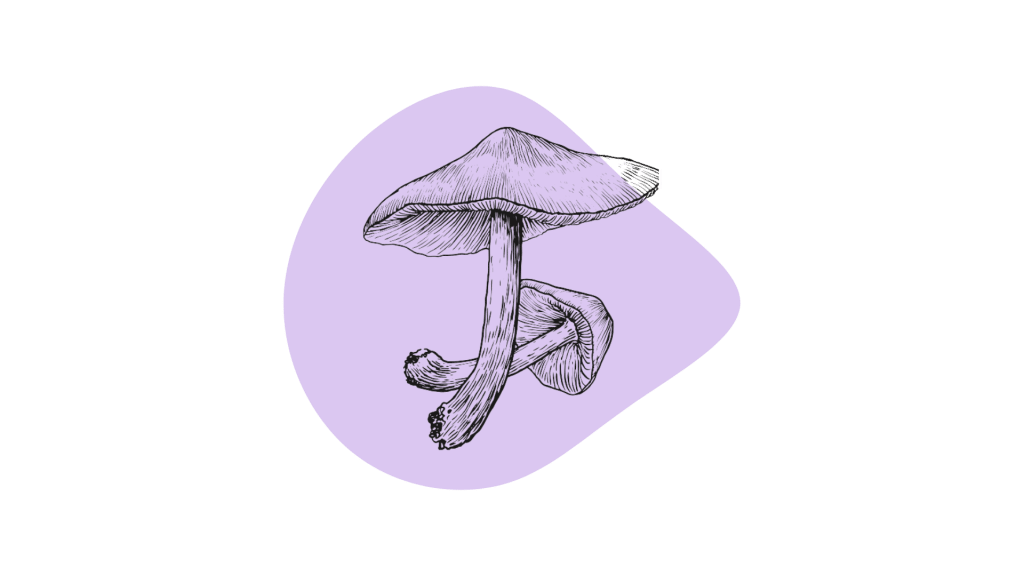
Consistent evidence supports the association of ADHD with the dopamine D4 receptor gene [7]. However, the research isn’t consistent or prevalent enough to place this gene as the sole genetic factor responsible for the condition.
ADHD seems to be hereditary, but that doesn’t mean every family member will have it or experience it the same way. A child can develop ADD or ADHD regardless of whether the parents show the same symptoms, making it incredibly difficult to pinpoint the exact genetic faults associated with it.
A Final Word: Are Psychedelic Microdoses an Effective Treatment for ADHD?
It’s still unclear whether psychedelic microdosing is an effective treatment for reducing ADHD symptoms. However, recent findings and first-hand reports support the claim.
It seems that the most effective psychedelic substances for ADHD are LSD and psilocybin. Many people report fewer symptoms after consuming low doses, and there’s also much more research surrounding these substances.
There may well be other psychedelics that help treat ADHD, but we lack reliable evidence and anecdotal reports at this moment in time.
For now, evidence suggests that LSD and psilocybin do help curb ADHD symptoms. As time goes on, we’ll see more research and clinical trials on psychedelics for ADHD.
The future looks bright, and psychedelics are finally starting to get the recognition they deserve. The “War on Drugs” seems to be fizzling out, and as it does, we’ll uncover the true potential of substances like LSD and psilocybin.
Leave a Reply